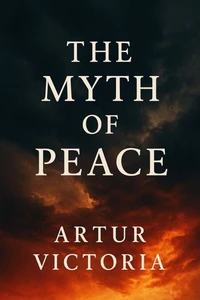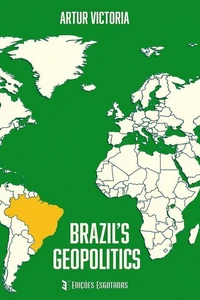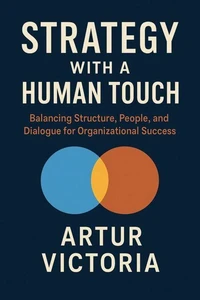Nouveauté
Europe’s Vulnerabilities in Modern Conflict. National Defence, #2
Par :Formats :
Disponible dans votre compte client Decitre ou Furet du Nord dès validation de votre commande. Le format ePub protégé est :
- Compatible avec une lecture sur My Vivlio (smartphone, tablette, ordinateur)
- Compatible avec une lecture sur liseuses Vivlio
- Pour les liseuses autres que Vivlio, vous devez utiliser le logiciel Adobe Digital Edition. Non compatible avec la lecture sur les liseuses Kindle, Remarkable et Sony
- Non compatible avec un achat hors France métropolitaine
 , qui est-ce ?
, qui est-ce ?Notre partenaire de plateforme de lecture numérique où vous retrouverez l'ensemble de vos ebooks gratuitement
Pour en savoir plus sur nos ebooks, consultez notre aide en ligne ici
- FormatePub
- ISBN8231679294
- EAN9798231679294
- Date de parution09/11/2025
- Protection num.Adobe DRM
- Infos supplémentairesepub
- ÉditeurWalzone Press
Résumé
Europe stands at a crossroads in its geopolitical evolution, facing a spectrum of security threats that span the traditional and the novel, the visible and the covert. For decades, the continent benefited from a relatively stable security environment under the protective umbrella of multilateral institutions and international norms. This stability, however, created structural weaknesses: defence budgets stayed low, critical infrastructure aged without adequate protection, and the urgency to modernise military capabilities waned.
The result is a Europe that is economically powerful but strategically fragile-a continent whose institutions were built for peace yet must suddenly contend with a world slipping back into great-power rivalry, asymmetric conflict, and technological disruption. The vulnerabilities Europe faces today are not confined to a single domain. Conventional military threats have resurfaced in ways many policymakers once believed impossible after the Cold War.
Terrorism, though less dominant in headlines, remains a persistent and decentralised danger that exploits social fragmentation and gaps in intelligence coordination. Hybrid warfare-deliberate ambiguity, disinformation, economic coercion, and covert action-targets the political cohesion that the European Union relies on. Cyber warfare, meanwhile, cuts across every modern system, from energy grids and financial institutions to hospitals and government services, exposing uncomfortable interdependencies and inconsistent standards of protection.
These challenges are not occurring in isolation. They interact and amplify one another. A cyberattack on energy networks can destabilise a country's political environment, creating opportunities for external actors to launch disinformation campaigns. A terrorist incident can inflame polarisation, weaken trust in institutions, and make it easier for hostile states to spread influence operations. A conventional military threat can be paired with hybrid tactics designed to slow European decision-making, undermine solidarity, and fracture alliances.
Modern conflict is not neatly compartmentalised; it is fluid, blended, and strategically synchronised. Europe must therefore confront not only individual threats but also the combined effect of multidimensional pressure.
The result is a Europe that is economically powerful but strategically fragile-a continent whose institutions were built for peace yet must suddenly contend with a world slipping back into great-power rivalry, asymmetric conflict, and technological disruption. The vulnerabilities Europe faces today are not confined to a single domain. Conventional military threats have resurfaced in ways many policymakers once believed impossible after the Cold War.
Terrorism, though less dominant in headlines, remains a persistent and decentralised danger that exploits social fragmentation and gaps in intelligence coordination. Hybrid warfare-deliberate ambiguity, disinformation, economic coercion, and covert action-targets the political cohesion that the European Union relies on. Cyber warfare, meanwhile, cuts across every modern system, from energy grids and financial institutions to hospitals and government services, exposing uncomfortable interdependencies and inconsistent standards of protection.
These challenges are not occurring in isolation. They interact and amplify one another. A cyberattack on energy networks can destabilise a country's political environment, creating opportunities for external actors to launch disinformation campaigns. A terrorist incident can inflame polarisation, weaken trust in institutions, and make it easier for hostile states to spread influence operations. A conventional military threat can be paired with hybrid tactics designed to slow European decision-making, undermine solidarity, and fracture alliances.
Modern conflict is not neatly compartmentalised; it is fluid, blended, and strategically synchronised. Europe must therefore confront not only individual threats but also the combined effect of multidimensional pressure.
Europe stands at a crossroads in its geopolitical evolution, facing a spectrum of security threats that span the traditional and the novel, the visible and the covert. For decades, the continent benefited from a relatively stable security environment under the protective umbrella of multilateral institutions and international norms. This stability, however, created structural weaknesses: defence budgets stayed low, critical infrastructure aged without adequate protection, and the urgency to modernise military capabilities waned.
The result is a Europe that is economically powerful but strategically fragile-a continent whose institutions were built for peace yet must suddenly contend with a world slipping back into great-power rivalry, asymmetric conflict, and technological disruption. The vulnerabilities Europe faces today are not confined to a single domain. Conventional military threats have resurfaced in ways many policymakers once believed impossible after the Cold War.
Terrorism, though less dominant in headlines, remains a persistent and decentralised danger that exploits social fragmentation and gaps in intelligence coordination. Hybrid warfare-deliberate ambiguity, disinformation, economic coercion, and covert action-targets the political cohesion that the European Union relies on. Cyber warfare, meanwhile, cuts across every modern system, from energy grids and financial institutions to hospitals and government services, exposing uncomfortable interdependencies and inconsistent standards of protection.
These challenges are not occurring in isolation. They interact and amplify one another. A cyberattack on energy networks can destabilise a country's political environment, creating opportunities for external actors to launch disinformation campaigns. A terrorist incident can inflame polarisation, weaken trust in institutions, and make it easier for hostile states to spread influence operations. A conventional military threat can be paired with hybrid tactics designed to slow European decision-making, undermine solidarity, and fracture alliances.
Modern conflict is not neatly compartmentalised; it is fluid, blended, and strategically synchronised. Europe must therefore confront not only individual threats but also the combined effect of multidimensional pressure.
The result is a Europe that is economically powerful but strategically fragile-a continent whose institutions were built for peace yet must suddenly contend with a world slipping back into great-power rivalry, asymmetric conflict, and technological disruption. The vulnerabilities Europe faces today are not confined to a single domain. Conventional military threats have resurfaced in ways many policymakers once believed impossible after the Cold War.
Terrorism, though less dominant in headlines, remains a persistent and decentralised danger that exploits social fragmentation and gaps in intelligence coordination. Hybrid warfare-deliberate ambiguity, disinformation, economic coercion, and covert action-targets the political cohesion that the European Union relies on. Cyber warfare, meanwhile, cuts across every modern system, from energy grids and financial institutions to hospitals and government services, exposing uncomfortable interdependencies and inconsistent standards of protection.
These challenges are not occurring in isolation. They interact and amplify one another. A cyberattack on energy networks can destabilise a country's political environment, creating opportunities for external actors to launch disinformation campaigns. A terrorist incident can inflame polarisation, weaken trust in institutions, and make it easier for hostile states to spread influence operations. A conventional military threat can be paired with hybrid tactics designed to slow European decision-making, undermine solidarity, and fracture alliances.
Modern conflict is not neatly compartmentalised; it is fluid, blended, and strategically synchronised. Europe must therefore confront not only individual threats but also the combined effect of multidimensional pressure.






















